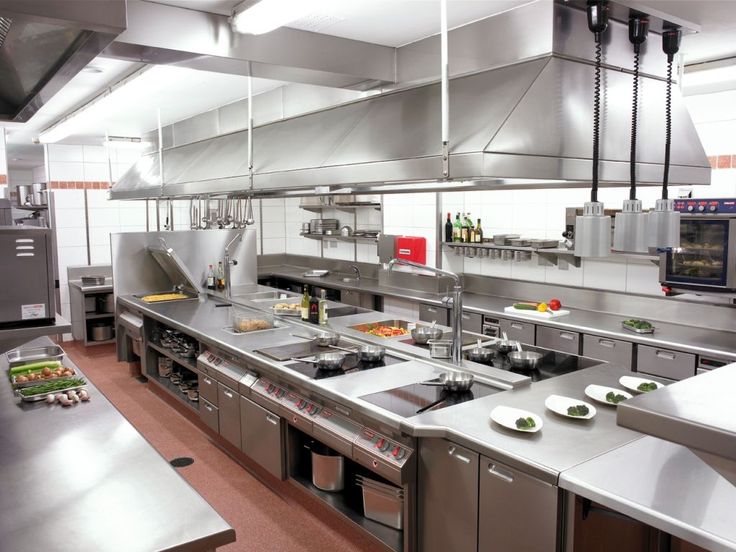Planning a restaurant kitchen is like choreographing a dance—every move, appliance, and station must work in perfect harmony to ensure chefs can perform seamlessly. However, common mistakes during the kitchen planning phase can disrupt this flow, leading to inefficiencies, increased costs, or even safety hazards. To avoid these pitfalls, consulting with the best restaurant consultants in India is essential. Their expertise can help you design a kitchen that maximizes efficiency, ensures safety, and supports smooth operations. In this guide, we’ll explore five critical mistakes you should avoid when planning your restaurant kitchen.
Importance of Restaurant Kitchen Planning
Before diving into the mistakes, let’s take a moment to understand why planning is so important. A well-designed kitchen enhances efficiency, minimizes stress, and ensures smoother service during busy hours. It acts as the backbone of your restaurant, directly impacting its overall performance. Partnering with experienced and best restaurant consultants can make a significant difference, helping you create a space that supports seamless operations and delivers an exceptional dining experience.
Mistake 1: Ignoring Workflow Efficiency
What Happens When Workflow is Overlooked?
Imagine chefs bumping into each other while trying to reach ingredients or equipment. Poor workflow planning creates chaos, delays, and frustration.
How to Avoid This Mistake
- Focus on the “Kitchen Triangle”: Ensure the stove, refrigerator, and sink are positioned in a way that minimizes movement.
- Design Stations Strategically: Keep preparation, cooking, and cleaning stations in logical proximity to streamline operations.
Mistake 2: Underestimating Space Requirements
Why Space Planning Matters
Too little space leads to overcrowding, while too much can waste resources. Striking a balance is crucial.
Steps to Get It Right
- Assess Your Needs: Consider your menu and estimate how much space each station requires.
- Plan for Future Growth: Leave room for adding equipment or accommodating larger teams as your restaurant expands.
Mistake 3: Poor Ventilation and Exhaust Systems
Consequences of Poor Ventilation
Without proper ventilation, your kitchen can become a smoke-filled, uncomfortable space, affecting both staff and diners.
How to Ensure Proper Ventilation
- Install High-Quality Exhaust Systems: These keep the air clean and remove excess heat.
- Follow Local Regulations: Many areas have specific ventilation requirements for commercial kitchens.
Mistake 4: Choosing the Wrong Equipment
The Cost of Inappropriate Equipment
Using undersized or low-quality equipment can slow down operations and lead to frequent breakdowns.
Tips for Choosing the Right Equipment
- Match Equipment to Your Menu: If you’re running a pizzeria, invest in a top-quality pizza oven.
- Think Long-Term: Opt for durable, energy-efficient appliances that save money over time.
Mistake 5: Neglecting Compliance with Safety Standards
Why Safety Standards Matter
Ignoring safety can lead to accidents, fines, or even temporary shutdowns.
How to Stay Compliant
- Follow Fire Codes: Install fire suppression systems and keep extinguishers within easy reach.
- Ensure Slip-Resistant Flooring: Minimize hazards with proper flooring materials.
- Conduct Regular Inspections: Stay ahead of potential issues by routinely checking equipment and systems.
Key Takeaways from Avoiding These Mistakes
Avoiding these common mistakes in restaurant kitchen planning can save you time, money, and headaches. Focus on workflow efficiency, allocate space wisely, prioritize ventilation, choose the right equipment, and always comply with safety standards.
Conclusion
Restaurant kitchen design and planning are crucial elements of a thriving dining establishment. By addressing common mistakes—such as overlooking workflow, underestimating space, or neglecting safety standards—you can create a kitchen that is efficient, safe, and tailored to your restaurant’s needs. Consulting with the best restaurant consultants in India ensures that every detail is carefully considered, resulting in a space that supports seamless operations. A well-designed kitchen is not just a functional space but an investment in your business’s future success. Plan carefully with expert guidance, and you’ll enjoy smoother operations, happier staff, and satisfied customers.
FAQs on Restaurant Kitchen Planning
1. Why is workflow efficiency important in restaurant kitchen planning?
Efficient workflow reduces delays and ensures smoother operations, especially during peak hours.
2. How do I determine the right space requirements for my kitchen?
Assess your menu, consider the number of staff, and plan for future growth to strike the right balance.
3. What are the key safety standards for restaurant kitchens?
Fire suppression systems, slip-resistant flooring, and proper ventilation are some of the essentials.
4. How can I choose the best equipment for my restaurant kitchen?
Match the equipment to your menu, prioritize quality, and opt for energy-efficient options.
5. What’s the best way to ensure proper ventilation in a restaurant kitchen?
Install high-quality exhaust systems and follow local regulations to maintain air quality and comfort.
